FEATURE
Inquilab Zindabad:
The Indian Revolutionary Movement and Bhagat Singh
Bhagat Singh was no lone meteor across the skies of the Indian freedom struggle. The uniquely popular figure of Bhagat Singh should in fact be seen as a composite symbol of the early revolutionary movement in India. In this feature, we carry excerpts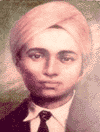 from one of Bhagat Singh’s most powerful and significant writings, and also profiles of some of his predecessors and contemporaries in the nascent revolutionary movement in India. Through these, we can understand Bhagat Singh as a product of a long process of development of the revolutionary movement in India, rather than as a lone hero.
from one of Bhagat Singh’s most powerful and significant writings, and also profiles of some of his predecessors and contemporaries in the nascent revolutionary movement in India. Through these, we can understand Bhagat Singh as a product of a long process of development of the revolutionary movement in India, rather than as a lone hero.
Kartar Singh Sarabha and the Gadar Movement: The Link Between 1857 and Bhagat Singh
(Kartar Singh Sarabha, the fiery and dynamic leader of the Gadar Party who was convicted in the first Lahore Conspiracy Case and hanged by the British at the age of nineteen and a half on 16 November 1915 along with 6 other comrades, was a major inspirational figure for Bhagat Singh himself, and was a formative influence for generations of youth in Punjab and elsewhere. The following note is based on Prof. Chaman Lal’s recently book published by NBT in Hindi, ‘Gadar Party Nayak Kartar Singh Sarabha’.)
Kartar Singh Sarabha and the Gadar Party forged the significant link between the first Indian War of Independence of 1857, Bhagat Singh and the subsequent communist movement in India. In the preface to his book, Prof. Chaman Lal reminds us that 1857 had been derided as a ‘mutiny’; Indian nationalists in the US appropriated the term and invested it with a proud sense of rebellion against colonialism, calling their party and its central publication ‘Gadar’ (which meant ‘mutiny’).
Bhagat Singh is known to have kept a picture of Sarabha in his pocket always. One of the most common activities of the Naujawan Bharat Sabha led by Bhagat Singh was to hold slide shows about Sarabha’s life to inspire Punjab’s youth.
The Gadar Party
The Gadar movement had a wide international and national spread over several countries and several Indian regions. More than 200 members of the Gadar Party were martyred; more than 315 served life sentences in ‘Kalapani’ (Andaman jail) and more than 122 served long jail sentences.
On January1 1912, Sarabha, a promising student of a little over 15 years of age, arrived in America. He joined the University at Berkeley and in December 1912 he met Lala Hardyal and Bhai Parmanand who were soon to draw him into the revolutionary nationalism of the Gadar movement. The mainstay of the Gadar Party was a huge number of Punjabi migrant workers living in the US and other countries.
Sarabha soon became the moving force behind the Gadar paper, and his comrades referred to him as the ‘Human Dynamo’, energetically and tirelessly taking care of the tasks of translating into Urdu and Punjabi as well as editing the paper.
The Gadri revolutionaries laid the foundation of the Communist movement in Punjab. The Bolshevik revolution of 1917 inspired revolutionary movements worldwide, and the Gadar Party too began to take a socialist direction. Two prominent Gadar party activists Bhai Ratan Singh and Bhai Santokh Singh reached Moscow in 1922 and participated in the Fourth Congress of the Comintern. They returned and decided to start publishing Kirtee (which eventually came into being in 1926), and to send Gadar party activists to Moscow for ideological education. 75 Gadar party members at different times were sent to Moscow. This included several prominent leaders – among them, Baba Bhagat Singh Bilga (the centenarian living legend to whom Prof. Chaman Lal has dedicated his book) whom British ‘Gadar directory’ describes as the ‘most dangerous rebel’; and Baba Bujha Singh who was later killed as a Naxalite in a police encounter in 1970.
When the second Lahore Conspiracy Case prisoners led by Bhagat Singh conducted a long hunger strike in jail demanding all the rights of political prisoners, Baba Sohan Singh Bhakna, then in the Lahore central jail, joined the strike. He had already served 14 years in the Andamans and in Indian prisons and was about to be released. In vain did Bhagat Singh plead with him not to do so - the hunger strike was a deadly threat to his old and ravaged body, and he also risked losing his remissions. But the Gadar veteran continued the hunger strike for as long as the others did. He lost a good part of his remissions and had to remain in jail for a year more.
In 1942 the Gadar party merged with the CPI. Prof Chaman Lal perceptively notes that Bhagat Singh’s own personality and Punjab’s Communist movement were in fact a qualitative political advancement of the Gadar Party and Gadar movement.
Bhagat Singh’s Comrades in Arms
(The personalities of Azad, Bismil and Ashfaq are an inseparable part of the development of the revolutionary movement in a definite socialist direction. The brief sketches of Azad and Bismil are based on longer articles written by Sudhir Vidyarthi (the former has appeared in Janmat). These are followed by excerpts from Ashfaq’s ‘Call to the Nation’, written a few days before his execution. Bhagwati Charan Vohra is another vital ideological link in the revolutionary movement. The note on him is based on the one in Bhagat Singh ke Sampoorna Dastavez, edited by Chaman Lal, 2004.)
Dauntless and Legendary Revolutionary – Chandrashekhar Azad
Born on July 23 1906, Chandrashekhar Tiwari (known as ‘Azad’) like many of his contemporaries was deeply affected by the Jallianwala Bagh massacre. At the age of 14 (while a student of Sanskrit at Banaras), he threw himself into the non-cooperation movement led by Gandhi. Arrested and brought before a British magistrate, he defiantly declared his name to be ‘Azad’ (free) and bravely bore the punishment of 15 lashes.
Like many of his contemporaries in the revolutionary movement, he shared the experience of great disillusionment with the abrupt manner in which Gandhi called off the movement at its height. Gandhi’s reason for calling it off was all the more galling – after an incident at Chauri Chaura where peasants set fire to the local police thana, thereby killing several policemen, Gandhi declared that the masses were not ready or mature enough for satyagraha, let alone freedom.
Banaras was a centre of revolutionary activity and Chandrashekhar Azad met Manmathnath Gupta who introduced him to the movement. The revolutionaries had formed the Hindustan Republican Association (HRA) with the goal of struggling for a egalitarian and democratic order – internationally and in India too.
On 9 August 1925 the revolutionaries led by Ram Prasad Bismil and 10 others including Asfaqulla Khan looted the Government treasury from a train at near Kakori (close to Lucknow). Subsequently the revolutionary movement suffered a major blow when Bismil and 40 others were arrested. Azad, however, escaped the police. The Kakori trial went on in the Lucknow Court for 18 months, after which Bismil, Ashfaq, Thakur Roshan Singh and Rajendranath Lahiri were sentenced to death, and several others received long prison sentences.
Azad, as the leader of the organisation after Bismil, faced the onerous task of rallying the scattered forces and rebuilding the entire organisation while remaining underground. Bhagat Singh and others helped to infuse fresh life and a sharp ideological orientation into the organisation. The organisation was renamed ‘Hindustan Socialist Republican Association’ (HSRA) to reflect this trend, and Azad was the Commander-in-Chief of this party.
It was Azad who led the party to avenge the killing of Lala Lajpat Rai with Saunders’ killing. In 1928, the two draconian and anti-worker laws were to be placed in the Central Assembly. The HSRA decided to explode two bombs in the Assembly. Azad’s original idea was that the two revolutionaries who would do this would then escape. But the organisation eventually decided that the two (Bhagat Singh and Batukeshawar Dutt) would throw leaflets with the aims and principles of their party and would court arrest. In the trial that would follow, the colonial Court itself would be used as a platform to disseminate the revolutionaries’ political ideas.
The Assembly Bomb event took place on 8 April 1929, and it is true that the trial that followed, the long hunger strike of revolutionaries in jail, disseminated their ideas and mobilized public opinion in their favour in an unprecedented way.
After Bhagat Singh’s and Batukeshwar’s arrest and the subsequent sentencing of Bhagat Singh, Sukhdev and Rajguru to hanging, Azad ceaselessly tried to free his comrades from the jail – but Bhagat Singh did not agree with him.
Eventually, it was betrayal by some members of the party that led to Azad being cornered by the British police in Alfred Park in Allahabad. Armed with just an ordinary pistol and a few cartridges, Azad nevertheless managed to take on a large police force in a long gun battle before shooting himself. True to his resolve, he did not let the British take him alive.
The figure of Azad has suffered even more misrepresentation than even that of Bhagat Singh. His Brahmin origins, his ‘sacred thread’, all have led him to being portrayed in films and such, as a ‘Hindutva’ prototype. It must be remembered that Azad was born in an orthodox but poor Brahmin household and the only schooling he received was in Sanskrit. He struggled against his orthodox upbringing, and was no passive follower but a leader of the HSRA, an organisation which proclaimed its socialist ideology and goals. While Congress leaders like Lajpat Rai were showing a tilt towards the Hindu Mahasabha, the revolutionary party led by Azad was bold enough to debate with Lajpat Rai through public leaflets (although Rai was a very popular and respected figure). But when Rai was killed by the British police in a lathicharge, Azad and others resisted the state repression by killing one of the police officer responsible for Rai’s killing.
Periyar on Bhagat Singh’s Martyrdom
[The truly national impact of Bhagat Singh’s martyrdom can be gauged by the following excerpts from an editorial of the Tamil publication Kudi Arasu written on the occasion by the leader of the anti-Brahminical movement of Tamilnadu, E.V. Ramaswamy Naicker (Periyar).]
‘…the day that Gandhi said he is guided by God, and that the varnashrama is the best system to run the world and is according to God’s will, we came to conclusion that there is no difference between Gandhism and Brahminism. We also concluded that this nation can benefit only with the end of the philosophy and principles of the Congress Party….If Bhagat Singh had not been executed it would have been far more difficult to achieve popularity for this idea. …
Bhagat Singh did not die of illness, as is usual. He sacrificed his life for the great goal of genuine equality and peace not only in India but also in the whole world. …We are proud from the depths of our heart of his martyrdom. Also, we appeal to those in the Government to seek out four sincere people like Bhagat Singh in each province and hang them on the gallows.’ |
The point is that Azad consciously repudiated not only the Congress and Gandhi but also the Hindu Mahasabha and remained a lifelong revolutionary. Nehru, in his autobiography, called Azad a ‘fascist’ because, according to him, Azad was stubbornly unwilling to agree to the idea that independence would come by peaceful means. Azad had argued against terrorism, but in favour of an armed struggle when the time called for it. It is significant that the same Indian people who revere Gandhi as a ‘Mahatma’, completely rejected the Congress’ epithets of ‘killer’, ‘violent’ and ‘fascist’ for Azad. Azad has also been consigned to the same oblivion as Bhagat Singh by the ruling class, but nevertheless he enjoys an unrivalled place in the popular imagination.
 Ram Prasad Bismil’s Sarfaroshi ki Tamanna
Ram Prasad Bismil’s Sarfaroshi ki Tamanna
Bismil, Ashfaq and Thakur Roshan Singh went to colonial gallows on 19 December 1927 in Gorakhpur, Faizabad and Allahabad jails respectively. The Kakori incident was a milestone in the Indian revolutionary movement and in the freedom struggle. It played a big role in filling the void left by the Non-cooperation Movement called off by Gandhi in 1921. More importantly, at a time when communal violence was spreading in the wake of the aborted Non-cooperation Movement, the Kakori martyrs effectively re-focussed the nation’s attention away from communalism towards struggle.
Both Bismil (groomed as a devout Arya Samaji) and Ashfaq (a Muslim) were born in Shahjahanpur in Uttar Pradesh. As a student, Ashfaq joined Bismil who was already a revolutionary, and both were fast friends. Their comradeship and joint martyrdom became a widespread symbol of communal unity. But it would be a mistake to reduce their role to unity of Bismil as a Hindu and Ashfaq as a Muslim. They were both, in a sense, primarily revolutionaries. One instance can prove this.
The Arya Samaj was known for its concept of ‘shuddhikaran’ campaign – of ‘purifying’ (i.e. Hinduising) Muslims and non-Hindus. Bismil notes in his autobiography that people speculated that he, as an Arya Samaji, might ‘purify’ his close friend Ashfaq. Bismil however declares to Ashfaq – ‘What would you have ‘purified’? There was simply nothing within you that needed purification.’ Ashfaq’s own final message to the nation repeatedly challenges the orthodoxies of the Shuddhi campaign as well as the Muslim Tabligh campaign.
Having suffered the travails of underground life after the Mainpuri Conspiracy Case (1918-19), and then the Kakori trial and death sentence, Bismil began to reflect in prison upon the inevitable need for a mass revolutionary movement rather than guerrilla warfare alone. Both Bismil and Ashfaq record having read, and exhort others to read, Bolshevik literature. They were forerunners of Bhagat Singh’s intellectual Marxist tradition, and make clear their espousal of the Communist ideal.
Bismil was an excellent poet and singer, and his song Sarfaroshi ki Tamanna became the anthem of the entire Indian revolutionary tradition and its martyrs. Bismil is also notable for having taken the emancipation of the Dalits as part of the revolutionary agenda.
Ashfaqulla Khan’s Call to the People of the Nation 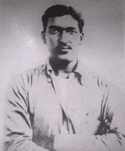
[Ashfaq’s final message is marked by urgent appeals against communal divide and rule, and his warm espousal of Communism; also by the timely chiding of Communists to shed their ‘gentlemanly’ manners and take up the task of living with the rural and urban working class and organising them. Ashfaq was by no means the first Muslim to hang on colonial gallows – thousands of Muslims in 1857 had preceded him. But his claim to be the “first and foremost Muslim” to die for the nation is probably a sign of the pressure of widespread communal propaganda of the time, which Ashfaq and Bismil hoped to counter with their ‘sajhi shahadat’ (joint martyrdom).]
… The Government’s spies are spreading propaganda on a communal basis. Their aim is not to safeguard or develop religion, but rather is to create obstacles in the path of a moving vehicle. …
…Your civil war, your mutual rift, will not prove beneficial to either of you and it is impossible that 7 crore Muslims become purified (shuddh). And it is meaningless to imagine that 22 crore Hindus can be turned into Muslims. But yes, it is easy, too easy for them all together to out the shackles of slavery around their necks. … Tabligh and Shuddhiwalas! For god’s sake open your eyes, where did you begin and where have you reached. …Who is that Hind or Muslim today who enjoys the religious freedom to which he is entitled? Can an enslaved people have any religion? Can you reform your religion? … …Live in peace with each other and become united, if not the assault of Hindustan’s misfortune will fall on your necks and you are the reason for slavery.
Ashfaq’s request to the Communists is – now that you have come to Hindustan with this non-national movement, it will not do to think of yourself as non-national, to hate the things of the nation, to prefer foreign dress and lifestyle. Come into your real colours, live for the nation, die for the nation. I agree with you to a considerable extent, and will say that my heart has always been heavy for poor peasants and suffering workers. While in hiding I had the chance to spend time among them and often wept to see their condition.
If you ask me, I would say that if I had my way, I would give up every possible thing in the world for them. The brightness of our cities is due to them. Our factories function and prosper due to their labour. Their hands get water from our pumps. Every necessary thing in the world takes place due to them alone. The poor peasants labour together in the fields and forests in the lashing rains of the monsoons and scorching afternoons of summer to produce our needs. It is absolutely true that they have no share in what they produce, what they make, and always remain unhappy and tattered. I agree that our white masters and their agents are responsible for all these matters. But what is the cure, that they be brought to a point where can realise what they are? The only way is that you adopt a way of life like their own and shed your gentlemanly manners to visit the countryside, camp in the factories and study their condition, engender consciousness in them. Read the biography of ‘Catherine Grandmother of Russia’ and see the sacrifices of the youth there. You can wear certainly become a leader wearing a collar, tie and a fine suit but you cannot prove useful for peasants and workers. Work in unity with other political parties and set aside your self-centredness, prove that whatever keeps you apart from other people is baseless. There is respect in my heart for you and even as I die I completely agree with your political goal. I aspired for an independent India in which the poor would live in happiness and comfort and all would be equal. After I am gone, may the almighty soon bring that day to a pass when Abdulla the carpenter and Dhania Chamar (the dalit – ed.) and the peasant too will be seen to sit on an equal footing with Mr. Khaliquzama, Jagatnarayan Mulla, and Nawab Mahmudabad.
My comrades, my revolutionary brothers, what can I say to you, what can I write? I know very well the spirit that is found in your kind – because I’m also proud and now very proud indeed that being a true revolutionary I am giving up my life. …
Can there be any higher honour than the fact that I am the very first and foremost Muslim to climb the gallows for the nation’s freedom? … He who died for the nation
- Ashfaqulla Khan ‘Hasrat’ Warsi, Faizabad Jail, 16 December 1927
Bhagtwati Charan Vohra 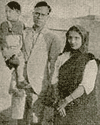
It is not widely known that Bhawati Charan Vohra was the intellectual and ideological ‘brain’ of the HSRA. He is the author of many works usually attributed to Bhagat Singh – notably the Manifesto of the Naujawan Bharat Sabha and the the HSRA. He was an ideologue, organiser, orator and a campaigner.
He was born in July 1903 in Agra in a prosperous family, and his father Shiv Charan Vohra later bequeathed several homes to him. He was married to Durgavati at a young age. Durga ‘Bhabhi’, as she was popularly known, also became an activist in the movement. Best known for having accompanied Bhagat Singh on the train journey in which he made his escape in disguise after the Saunders killing, she was the one who led the funeral procession of Jatin Das in his departed body’s final journey from Lahore to Kolkata after his death in the 63-day jail hunger strike. All along the way, huge crowds joined the funeral procession.
Vohra left college to join the satyagraha movement in 1921, and after the movement was called off, joined National College, Lahore where he got a BA degree. It was there that he was initiated into the revolutionary movement.
After Bhagat Singh’s arrest, Yashpal (the Hindi writer) and Vohra together made a partially successful attempt to blow up a train in which the Viceroy was travelling. His death on 28 May 1930 was tragic: while trying to make bombs to free Bhagat Singh from prison, a bomb accidentally exploded in his hand, killing him.
 Batukeshwar Dutt
Batukeshwar Dutt
Born in Burdwan, Dutt was the one who along with Bhagat Singh threw bombs and leaflets in the Assembly. Tried in Central Assembly bomb case, he was sentenced in 1929 to life imprisonment by the court of Session Judge of Delhi and deported to the Cellular Jail. He participated in two hunger strikes in Cellular Jail during May 1933 and July 1937. BK Dutta was repatriated in 1937. He was released from Bankipur Jail in the year 1938. He died in 1965, unsung and forgotten by the ruling class in Independent India.
Sukhdev Thapar 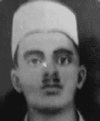
One of the trio who was hanged in Lahore Central Jail with Bhagat Singh, Sukhdev is known to have started study circles at National College (Lahore) in order to study Indian history and revolutionary literature. Sukhdev wrote a famous letter to Mahatma Gandhi protesting against the latter's disapproval of revolutionary tactics. In prison, some of Bhagat Singh's most warm and personal correspondence is with Sukhdev.
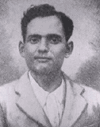 Jatindranath Das
Jatindranath Das
Jatindra Nath Das was born in Kolkata. A former member of the Anushilan Samiti, jailed during the Non-Cooperation movement, he was contacted by revolutionaries and agreed to participate in bomb-making for the HSRA. He was arrested for terrorist activities and was imprisoned in Lahore jail.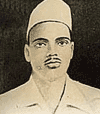 There, he he undertook an epic hunger strike that lasted 63 days. He died, hunger strike unbroken, on 13 September. As his body was carried from Lahore to Kolkata by train, thousands of people rushed to every station to pay their homage to the martyr. A two-mile long procession in Kolkata carried the coffin to the cremation ground.
There, he he undertook an epic hunger strike that lasted 63 days. He died, hunger strike unbroken, on 13 September. As his body was carried from Lahore to Kolkata by train, thousands of people rushed to every station to pay their homage to the martyr. A two-mile long procession in Kolkata carried the coffin to the cremation ground.
Shivram Rajguru
This activist of HSRA from Maharashtra was the third member of the trio of Lahore martyrs, who died on the gallows with Sukhdev and Bhagat Singh.
 from one of Bhagat Singh’s most powerful and significant writings, and also profiles of some of his predecessors and contemporaries in the nascent revolutionary movement in India. Through these, we can understand Bhagat Singh as a product of a long process of development of the revolutionary movement in India, rather than as a lone hero.
from one of Bhagat Singh’s most powerful and significant writings, and also profiles of some of his predecessors and contemporaries in the nascent revolutionary movement in India. Through these, we can understand Bhagat Singh as a product of a long process of development of the revolutionary movement in India, rather than as a lone hero. 
 Ram Prasad Bismil’s Sarfaroshi ki Tamanna
Ram Prasad Bismil’s Sarfaroshi ki Tamanna 

 Batukeshwar Dutt
Batukeshwar Dutt 
 Jatindranath Das
Jatindranath Das  There, he he undertook an epic hunger strike that lasted 63 days. He died, hunger strike unbroken, on 13 September. As his body was carried from Lahore to Kolkata by train, thousands of people rushed to every station to pay their homage to the martyr. A two-mile long procession in Kolkata carried the coffin to the cremation ground.
There, he he undertook an epic hunger strike that lasted 63 days. He died, hunger strike unbroken, on 13 September. As his body was carried from Lahore to Kolkata by train, thousands of people rushed to every station to pay their homage to the martyr. A two-mile long procession in Kolkata carried the coffin to the cremation ground.